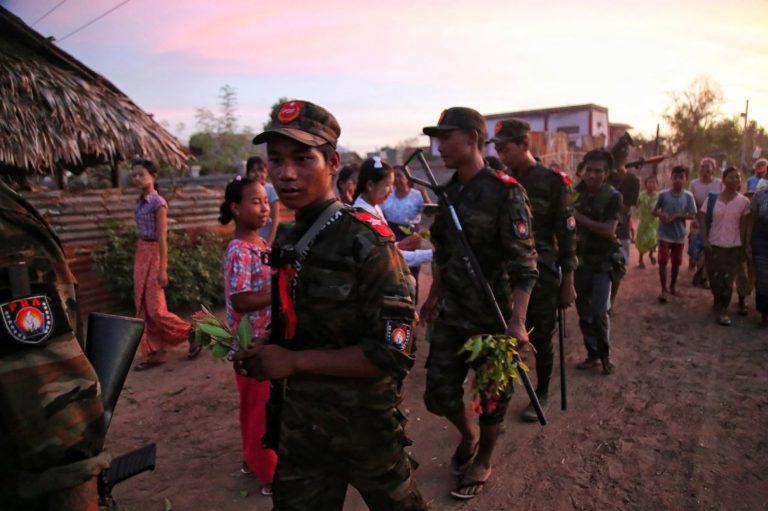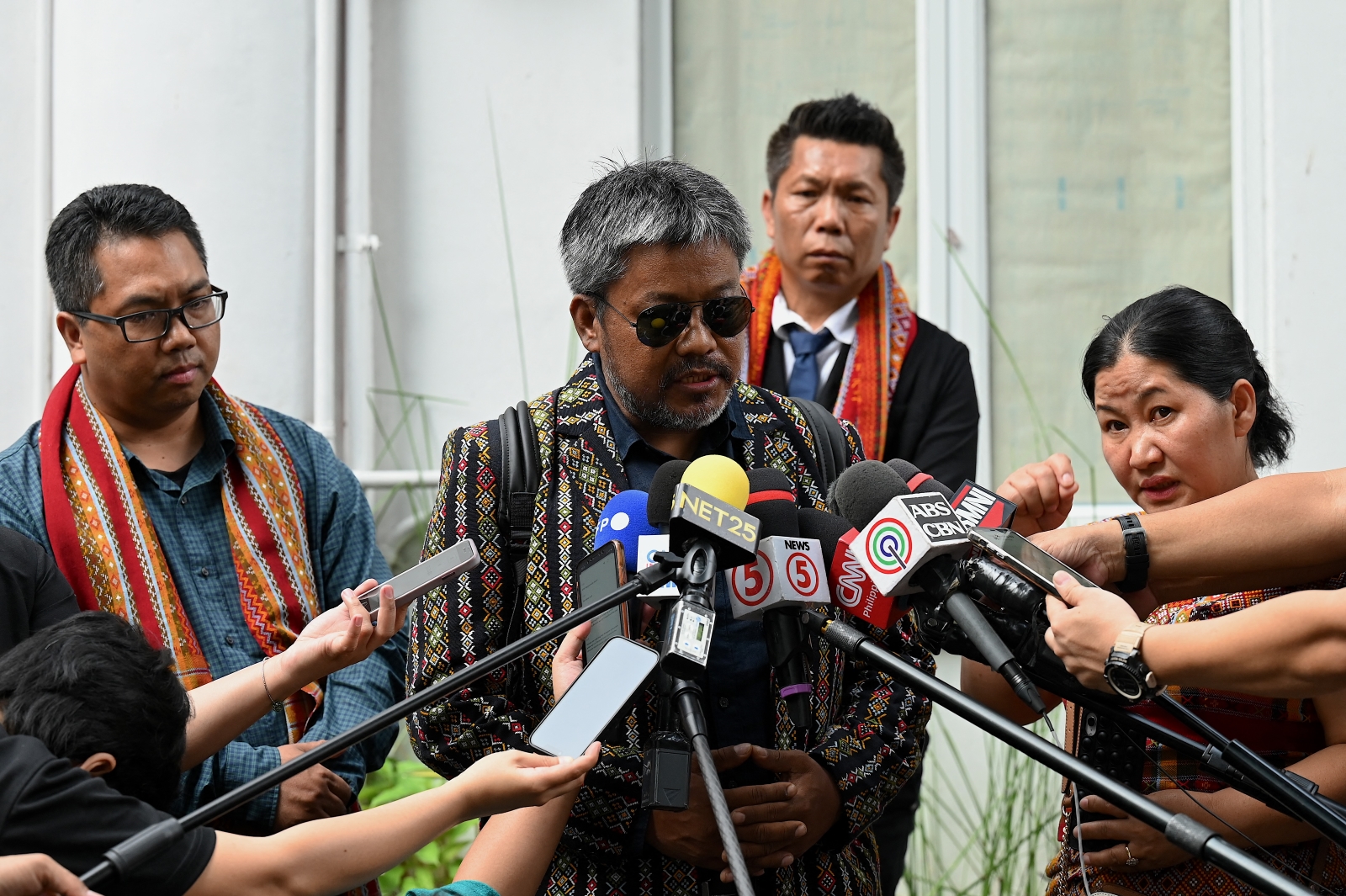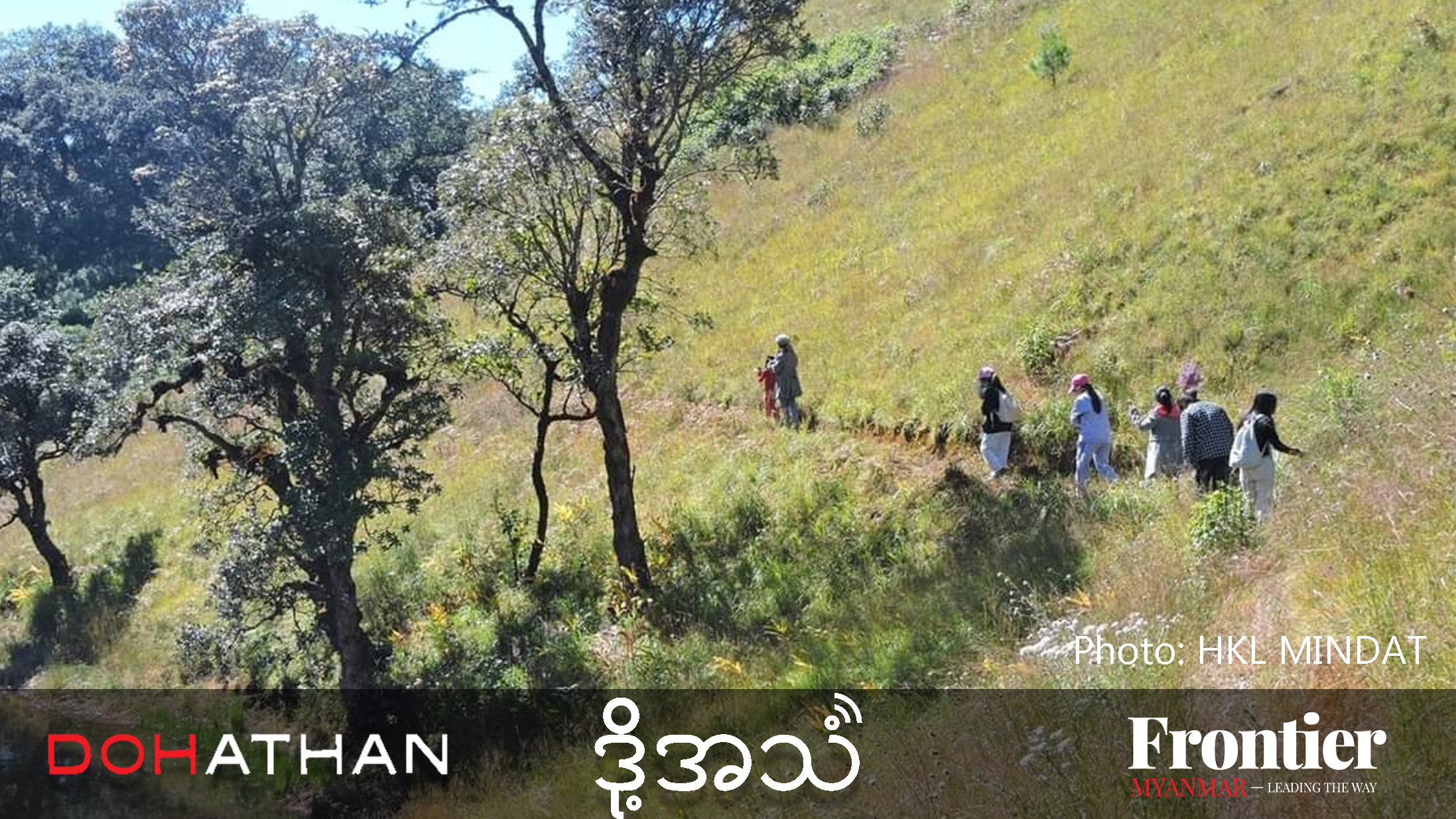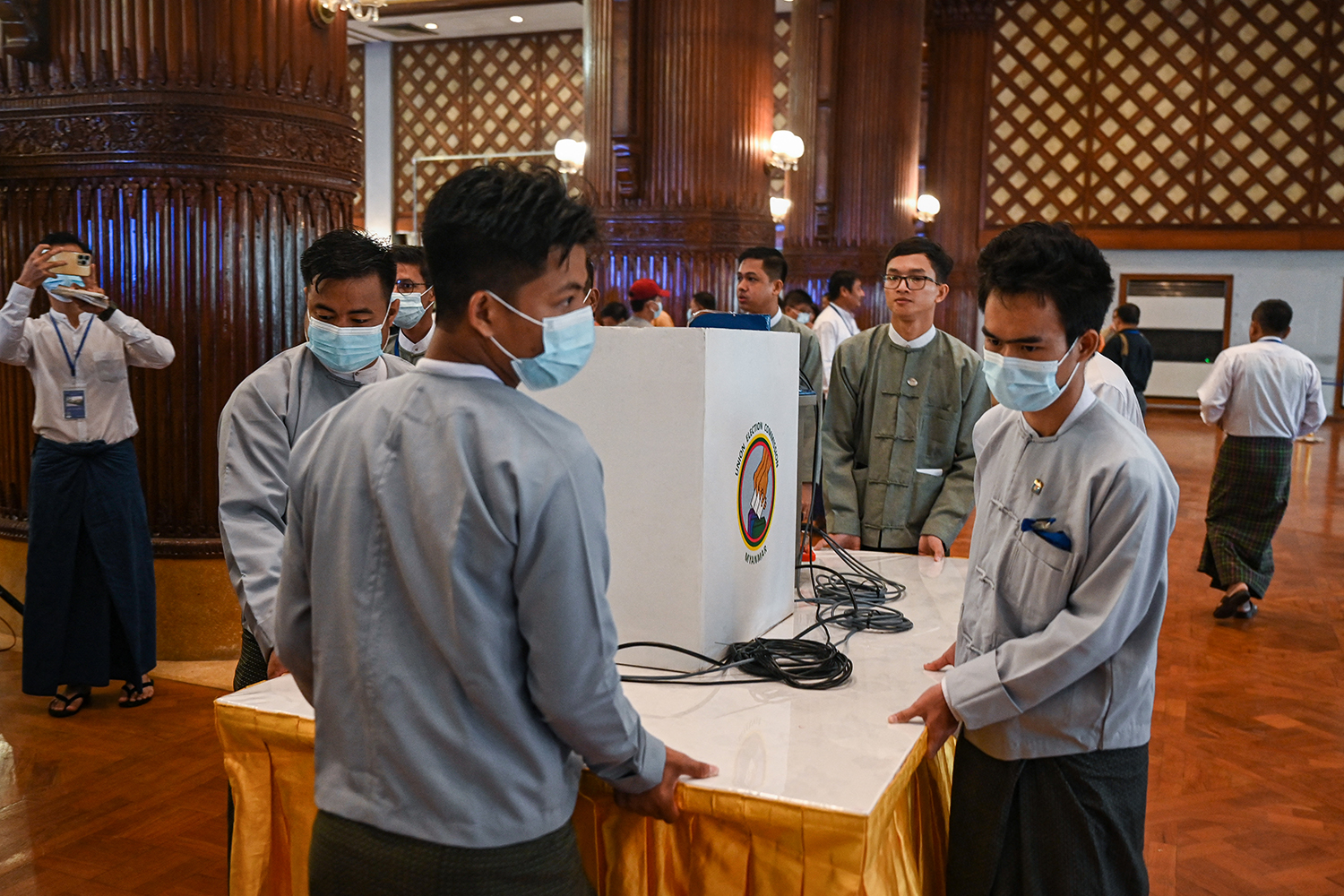Development is the key election issue for the people of Chin State, but a more immediate concern is recovering from the devastation, disrupted livelihoods and misery wrought by recent flooding.

A Chin mother carrying her baby on her back in the village of Kan Pat Lat in Chin State. (Ye Aung Thu / AFP)
Thousands of people have been forced to seek shelter in emergency accommodation because of flooding throughout the hilly, sparsely populated, far western state, which shares borders with Sagaing and Magway regions, Rakhine State and India. Landslides caused by torrential rain in Chin State, one of nation’s worst flood-affected areas, have caused serious disruption to road transport and have complicated the relief operation.
The highway to the state capital, Hakha – its only link with the outside world, via Kalay in neighbouring Sagaing Region – reopened on August 8 after being closed for 10 days because of flood damage and landslides that also disrupted access to other big towns, such as Tedim and Falam.
But life goes on, and as a post-flood recovery and rehabilitation operation gains pace in the state, its politicians and people have more time to ponder election issues.
The big political question is which parties and candidates can bring more development to Chin State and contribute to a better future for its people.
The state’s Chief Minister, U Hong Ngai, is a member of the Union Solidarity and Development Party, but some Chin politicians say it has been neglected by the big, mainstream parties.
Support more independent journalism like this. Sign up to be a Frontier member.
Among them is Chin League for Democracy chairman U Pu Ngai Sak, who referred to the Union government’s K5 billion (about US$4.28 million at current rates) allocation to the state last fiscal year for rural development and poverty alleviation.
In a report tabled in the Pyithu Hluttaw last month, the parliamentary public accounts committee said only K1.6 billion was spent.
“But Chin State is still the same as before,” U Pu Ngai Sak told Frontier. “It is rare for the [mainstream] parties to work for the state’s development,” he said.
Chin State residents told Frontier that the key to development is better transport links to the rest of Myanmar. At the top of their infrastructure wish list is an airport.
The state is one of the few in Myanmar without a link by air to the rest of the country. Its only airport, at Kyaukhtu in southern Chin about 90 miles (145 kilometres) from Hakha, has been closed for many years.
Chin is the second least populated of Myanmar’s 14 states and regions, with 478,801 people, after 286,627 in Kayah, show figures from last year’s census.
The state’s three main parties are the Chin National Democratic Party (formerly the Chin National Party), Chin League for Democracy and Chin Progressive Party. Smaller parties in ethnically diverse Chin include the Ethnic National Development Party, Zo Ethnic Region Development Party, Zomi Congress for Democracy and Khumi (Khami) National Party.
The smaller parties have their headquarters in Chin State, but the CNDP is based in Yangon and the CLD and CPP, in Kalay.
In the 2010 election, the USDP won seven of the 18 elected seats in the 24-member Chin State assembly, followed by the CPP and Chin National Party with five each, and the ENDP, with one.
The November 8 election will be the first for the CLD, which was formed just over a year ago.
Including the USDP and the National League for Democracy, there will be nine parties vying for seats this year. The seven state-based parties contesting the election have raised the prospect that a widely dispersed vote will prevent any one of them securing a dominant position in the assembly. Chin’s voters face some hard choices.
The Union Election Commission has stipulated a 60-day national campaign period but some Chin parties are concerned that their ability to canvas for votes will be constrained by flood and landslide damage to roads.
Unless roads are repaired by September 8, the only way to reach many constituencies in Tedim, Falam, Hakha, Matupi and Mindat will be by walking.
“Chin ethnic parties, including ours, will find it difficult to campaign because rehabilitation has only just begun and most roads are mud,” said U Pu Ngai Sak.
“Roads are the worst I’ve seen and the role being played by government employees in relief and rehabilitation work will give the Union Solidarity and Development Party an advantage,” he said.
CNDP chair U Zo Zam, who hopes to become the state’s next chief minister, also expressed concern about the possibility that bigger and better organised non-Chin parties would poll well in the election.
Another factor in the politics of Chin State is the role played by the Chin National Front and members of its armed wing, the Chin National Army.
Senior members of Chin parties told Frontier on condition of anonymity that talks were taking place with the CNF because it can influence the selection of election candidates as well as voters in some areas.
They said there was the possibility of retaliation if a party chose an election candidate who was not favoured by the CNF.






